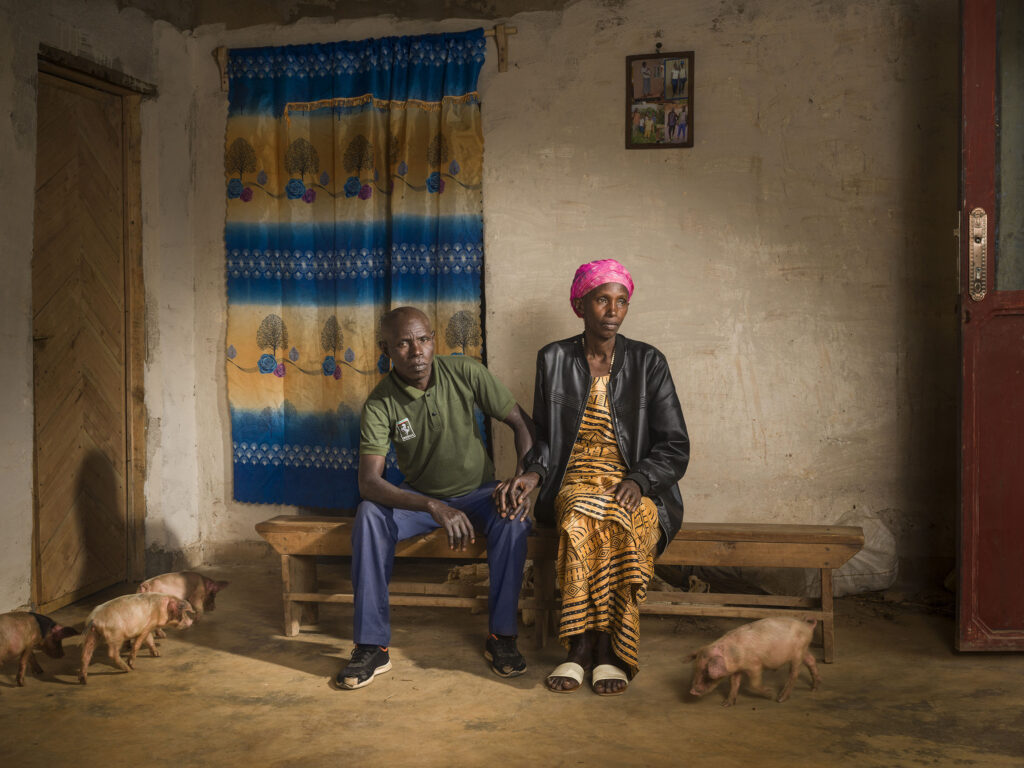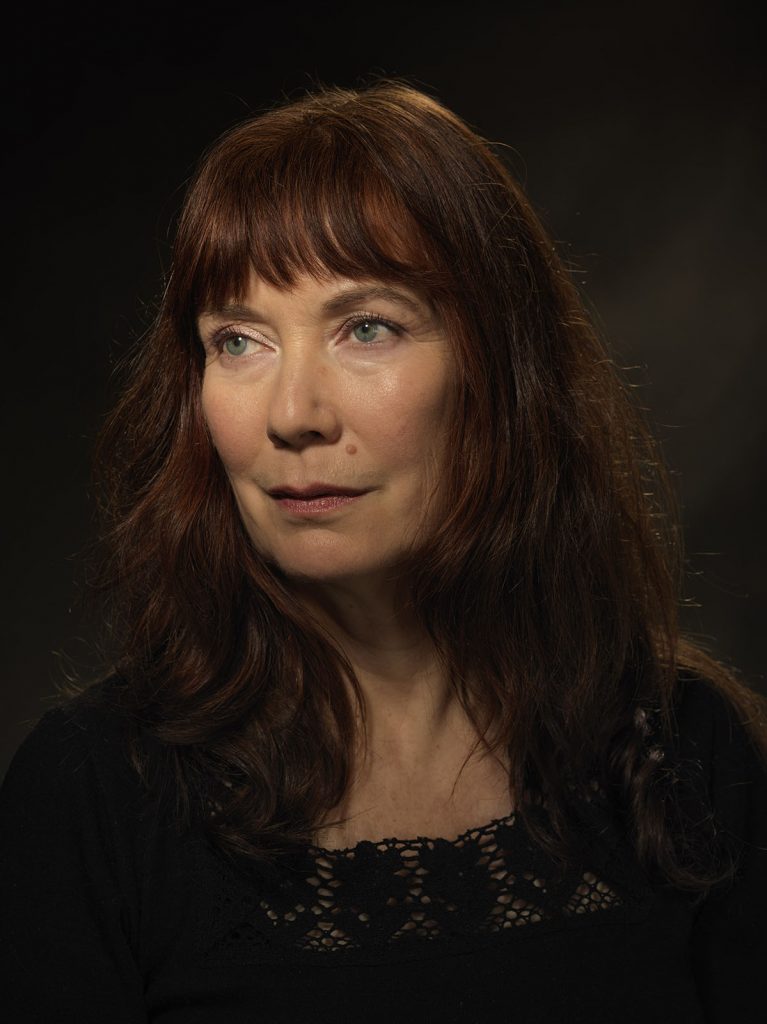PROJECTS
NEW – blood bonds: Reconciliation in post-genocide rwanda
Every war, every genocide, eventually comes to an end. Survivors, bereaved families, perpetrators, and bystanders are left to pick up the pieces and try to live together again.
But how do you do that when mutual distrust still smolders and fear and hatred continue to linger?
It requires a healing process that often takes years—sometimes even generations.
In Rwanda, that process has been ongoing since shortly after the 1994 genocide.
 ‘The Verdict’ is a case study: a kaleidoscopic whole made up of different perspectives on the murder case involving Christina Boyer, built up from a range of photographic and text-based approaches. The project has a greater scope than this, however, as it also presents us with insights into the American criminal justice system.
‘The Verdict’ is a case study: a kaleidoscopic whole made up of different perspectives on the murder case involving Christina Boyer, built up from a range of photographic and text-based approaches. The project has a greater scope than this, however, as it also presents us with insights into the American criminal justice system.
 Jan Banning was permitted to spend three days taking photographs in Pulaski State Prison, a penitentiary for women in the US. ‘Each time one of the women entered the studio I introduced myself, shook her hand, looked into her eyes and repeated her name. Then I invited her to step in front of the camera. After each portrait session, I shook her hand again and said goodbye. Several of the women burst into tears at this point: they had become totally unaccustomed to such basic human gestures.’
Jan Banning was permitted to spend three days taking photographs in Pulaski State Prison, a penitentiary for women in the US. ‘Each time one of the women entered the studio I introduced myself, shook her hand, looked into her eyes and repeated her name. Then I invited her to step in front of the camera. After each portrait session, I shook her hand again and said goodbye. Several of the women burst into tears at this point: they had become totally unaccustomed to such basic human gestures.’
 Bureaucratics is a project consisting of a book and a traveling exhibition that has so far been shown in museums and galleries in some twenty countries on five continents. The book and the exhibition contain 50 photographs and are the product of an anarchist’s heart, a historian’s mind and an artist’s eye.
Bureaucratics is a project consisting of a book and a traveling exhibition that has so far been shown in museums and galleries in some twenty countries on five continents. The book and the exhibition contain 50 photographs and are the product of an anarchist’s heart, a historian’s mind and an artist’s eye.
 Raping women seems to be a normal byproduct of wars. During World War II, the Japanese military even set up a system for sex slavery: Tens of thousands of “comfort women” in Asia were forced into prostitution at military brothels. In addition, many girls were abused sexually in railroad wagons, factory warehouses or night after night at home. Most of these women have suffered physical and emotional consequences ever since.
Raping women seems to be a normal byproduct of wars. During World War II, the Japanese military even set up a system for sex slavery: Tens of thousands of “comfort women” in Asia were forced into prostitution at military brothels. In addition, many girls were abused sexually in railroad wagons, factory warehouses or night after night at home. Most of these women have suffered physical and emotional consequences ever since.
 The Sweating Subject is a series of group portraits of tribal chiefs and their court, which includes myself, photographer Jan Banning. All are members of the Gonja or Dagomba tribe in the Northern Territories of Ghana — except for me, the artist: I am from the Netherlands. I came to Ghana on an assignment to photograph the mixing of tradition and modernity and was invited by the chiefs to have my photo taken with them.
The Sweating Subject is a series of group portraits of tribal chiefs and their court, which includes myself, photographer Jan Banning. All are members of the Gonja or Dagomba tribe in the Northern Territories of Ghana — except for me, the artist: I am from the Netherlands. I came to Ghana on an assignment to photograph the mixing of tradition and modernity and was invited by the chiefs to have my photo taken with them.
 Artist-photographer Jan Banning and documentary maker Frank van Osch explored the ‘soul’ of true carnival enthusiasts this spring. The cancellation of this exuberant, anarchic folk festival in 2021 due to COVID-19 inspired them to undertake the project “The Sorrow of Carnival.” They set out to discover the ‘true face’ of the revelers behind the colorful and festive facade in three carnival provinces, at three locations: Den Bosch, Tegelen, and Groenlo.
Artist-photographer Jan Banning and documentary maker Frank van Osch explored the ‘soul’ of true carnival enthusiasts this spring. The cancellation of this exuberant, anarchic folk festival in 2021 due to COVID-19 inspired them to undertake the project “The Sorrow of Carnival.” They set out to discover the ‘true face’ of the revelers behind the colorful and festive facade in three carnival provinces, at three locations: Den Bosch, Tegelen, and Groenlo.
 Xenophobia, and especially islamophobia, is on the rise in many European countries. In my native Netherlands, as well as in Italy, Austria, Denmark and Hungary for example, anti-immigration parties are involved in the national governments. These anti-immigration parties have thrived on resentment, anti-globalism, rising inequalities, the economic crisis and the resulting uncertainties, and are scapegoating non-western immigrants.
Xenophobia, and especially islamophobia, is on the rise in many European countries. In my native Netherlands, as well as in Italy, Austria, Denmark and Hungary for example, anti-immigration parties are involved in the national governments. These anti-immigration parties have thrived on resentment, anti-globalism, rising inequalities, the economic crisis and the resulting uncertainties, and are scapegoating non-western immigrants.
 Since the fall of the Berlin Wall and the collapse of the Soviet Union, Communism seems like a thing of the past: relegated to the dustbin of history. But photographer Jan Banning’s Red Utopia looks at various corners of the world, where the ideology that so determined the course of the twentieth century is still alive and kicking.
Since the fall of the Berlin Wall and the collapse of the Soviet Union, Communism seems like a thing of the past: relegated to the dustbin of history. But photographer Jan Banning’s Red Utopia looks at various corners of the world, where the ideology that so determined the course of the twentieth century is still alive and kicking.
 The 24 Dutch and Indonesian men in the book and exhibition “Traces of War” share the brutal World War II experience of working on the Burma or Sumatra (also called: Pakanbaroe or Pekan baru) Railroads, for which the Japanese used forced labor. Sixteen of them are former POWs, the other eight are former Indonesian romushas (civilian forced laborers). For the portraits, Banning took them back to the period of their slave labour.
The 24 Dutch and Indonesian men in the book and exhibition “Traces of War” share the brutal World War II experience of working on the Burma or Sumatra (also called: Pakanbaroe or Pekan baru) Railroads, for which the Japanese used forced labor. Sixteen of them are former POWs, the other eight are former Indonesian romushas (civilian forced laborers). For the portraits, Banning took them back to the period of their slave labour.
 Since the fall of the Berlin Wall and the collapse of the Soviet Union, Communism seems like a thing of the past: relegated to the dustbin of history. But photographer Jan Banning’s Red Utopia looks at various corners of the world, where the ideology that so determined the course of the twentieth century is still alive and kicking.
Since the fall of the Berlin Wall and the collapse of the Soviet Union, Communism seems like a thing of the past: relegated to the dustbin of history. But photographer Jan Banning’s Red Utopia looks at various corners of the world, where the ideology that so determined the course of the twentieth century is still alive and kicking.
 This was Dickson ten years ago, a typical village of fifty households in the African country of Malawi. Photographed and described, five short years after the United Nations in September 2000 embraced their Millennium Development Goals, of which halving poverty and hunger by the end of 2015 is by far the most important one. Meet Hammard Andsen, penniless but the ‘richest’ man of the village.
This was Dickson ten years ago, a typical village of fifty households in the African country of Malawi. Photographed and described, five short years after the United Nations in September 2000 embraced their Millennium Development Goals, of which halving poverty and hunger by the end of 2015 is by far the most important one. Meet Hammard Andsen, penniless but the ‘richest’ man of the village.
 All in all, an amount of about 72 million litres was sprayed over South Vietnam. Of this total about 51 million litres was Agent Orange (so called after the colour of the label on the drums). The American National Academy of Sciences (NAS) concluded that there is sufficient evidence of an association between Agent Orange/dioxin and several diseases, e.g. Hodgkin’s disease, Non-Hodgkin’s Lymphoma and soft-tissue sarcoma, and suggestive evidence of an association with other cancers and diseases.
All in all, an amount of about 72 million litres was sprayed over South Vietnam. Of this total about 51 million litres was Agent Orange (so called after the colour of the label on the drums). The American National Academy of Sciences (NAS) concluded that there is sufficient evidence of an association between Agent Orange/dioxin and several diseases, e.g. Hodgkin’s disease, Non-Hodgkin’s Lymphoma and soft-tissue sarcoma, and suggestive evidence of an association with other cancers and diseases.
 In 1974, a group of officers toppled the Portuguese government. The military coup turned into the Carnation revolution. One of the most striking revolutionary developments was the Reforma Agraria. Lands owned by – often absentee – large landowners were now turned into agricultural co-operatives with more than 71,000 workers.
In 1974, a group of officers toppled the Portuguese government. The military coup turned into the Carnation revolution. One of the most striking revolutionary developments was the Reforma Agraria. Lands owned by – often absentee – large landowners were now turned into agricultural co-operatives with more than 71,000 workers.
Lorem ipsum dolor sit amet, consectetur adipiscing elit. Ut elit tellus, luctus nec ullamcorper mattis, pulvinar dapibus leo.






